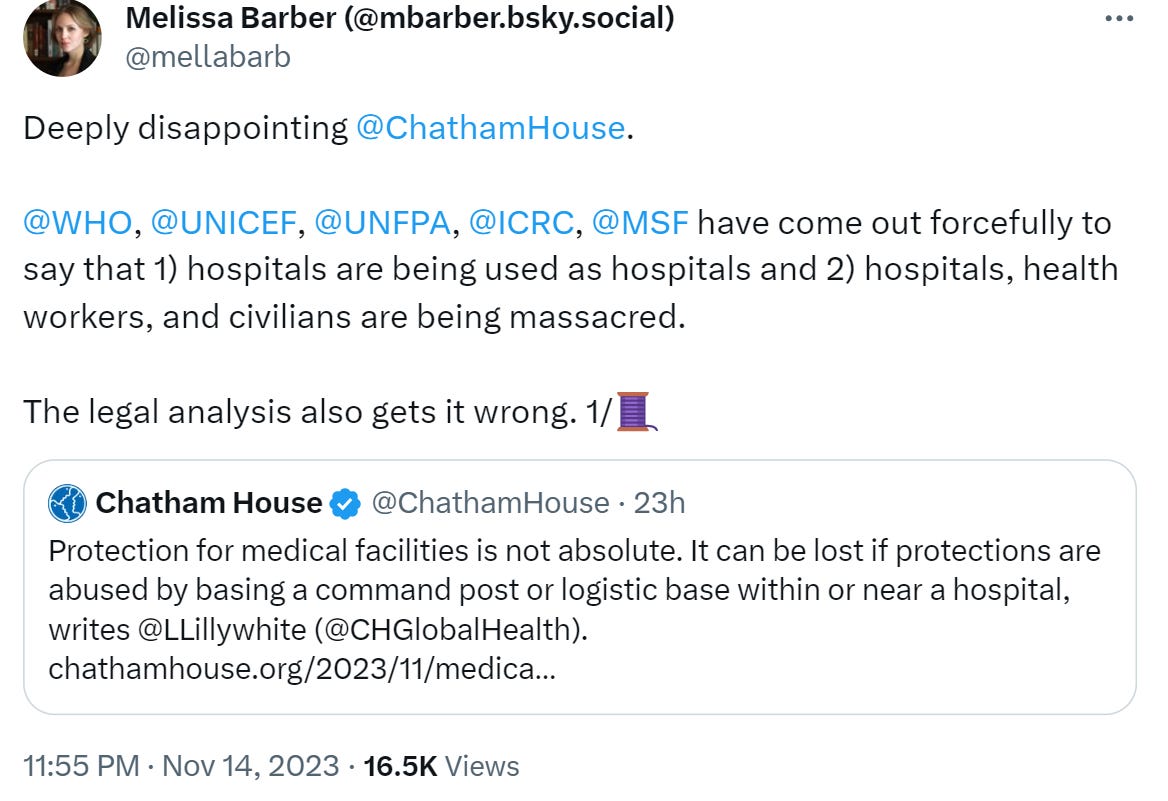Not Finished Yet: Now is the Time to End Childhood Tuberculosis [GUEST ESSAY]
Newsletter Edition #201 [The Curated Primer - Featured in GHF]
Hi,
Last week WHO released its annual report on Tuberculosis. More than 10 million people continue to fall ill with TB every year, according to WHO.
The latest report said that “in 2022, TB was the world’s second leading cause of death from a single infectious agent, after coronavirus disease (COVID-19), and caused almost twice as many deaths as HIV/AIDS.” The WHO estimates that in 2022, “55% of people who developed TB were men, 33% were women and 12% were children (aged 0–14 years).”
Today we bring you a guest essay from the Elizabeth Glaser Pediatric AIDS Foundation, on the burden of TB in children.
TB kills a child every three minutes, and yet only 40% of children affected by TB have access to treatment in the absence of right kind of tests, MSF has said.
In this essay, the author says innovations in TB testing and treatment should reach children at the same pace as adults. Read on.
As announced earlier, this is a part of the Featured in Geneva Health Files Sponsored Series that enables stakeholders to communicate with our painstakingly-built audience of more than 6,000 readers across 130 countries comprising decision-makers, diplomats, academia, experts, activists and the private sector. It also helps us diversify our revenues at a time of financial uncertainty. We address sponsored content on a case-by-case basis, with care, caution, responsibility and discretion, in line with our editorial policy. Write to us if you wish to engage with our readership.
If you find our work valuable, become a paying subscriber. Tracking global health policy-making in Geneva is tough and expensive. Help us in raising important questions, and in keeping an ear to the ground. Readers paying for our work helps us meet our costs.
Our gratitude to our subscribers who help us keep the lights on!
Until later.
Best,
Priti
Feel free to write to us: patnaik.reporting@gmail.com or genevahealthfiles@protonmail.com; Follow us on Twitter: @filesgeneva
I. GUEST ESSAY
Featured in Geneva Health Files: Sponsored Series
Not Finished Yet: Now is the Time to End Childhood TB
By David Ruiz Villafranca, Public Policy & Advocacy Advisor, Elizabeth Glaser Pediatric AIDS Foundation
Despite being a preventable, treatable, and curable disease, tuberculosis (TB) is second to COVID-19 as the leading cause of death by a single infectious disease. TB remains a major contributor to childhood morbidity and mortality, but the response to end the disease in children has been poorly addressed by the global public health community.
The recently launched WHO Global TB Report shows that in 2022, only 613,000 (49%) of the 1.25 million children and young adolescents estimated to fall ill with TB were notified to national TB programs (NTPs), and of the 1.56 million child contacts under the age of 5 estimated to be eligible for TB preventive treatment (TPT) only 590,000 (37%) received TPT. This failure to reach children impacted by TB is unacceptable.
At this year’s UN High Level Meeting on TB, global health advocates issued an urgent call for leaders to close the gaps facing children in the global TB response. Member states, in a historic move, committed to addressing the gaps in the prevention, diagnosis, treatment and care of children impacted by TB.
These steps include improving case detection strategies, including better diagnostics and contact investigation, and accelerating access to optimal formulations of medicines for children. But despite these declarations, progress in the fight against TB will not be achieved without accountability and leadership.
Global health leaders have a moral imperative to prioritize actions that ensure the innovations in TB testing and treatment reach children at the same pace as adults. Investments are urgently needed to increase access to innovative tools adapted to children, and to implement innovative models of care to find the missing cases and quickly link them with care and prevention services.
Decentralization of care and integration of TB into primary child health programs and services are possible and needed. Incorporating TB screening into other health services frequently accessed by children and their families – such as outpatient departments, nutrition, HIV and, maternal, newborn and child health, – can help providers better identify those children most in need of TB services.
Results from a policy assessment conducted in ten countries by the Elizabeth Glaser Pediatric AIDS Foundation showed that attention to pediatric TB has increased in national strategic plans between 2018 and 2021. For example, Kenya updated its policies and established clear diagnostic and treatment targets for children and developed budgets that specifically earmarked funds for childhood TB. Similarly, other countries such as Cameroon, have made significant progress in adopting best screening and case-finding activities at the facility and community levels. Doing so led to greater capacity for community workers to perform childhood TB screenings and all assessed countries showed a greater commitment to both record and report key data on childhood TB. The same assessment also found that adequate interventions and financial investments needed to quell childhood TB activities remain underfunded and not all countries have set specific targets for childhood TB diagnosis and treatment efforts.
The fight to end TB is within our grasp. Increased evidence has identified winnable strategies, healthcare interventions, and models of care that can address the gaps in identifying, treating, and preventing TB in children. Now is the time for the global health community to stick to its commitment and invest in programs that ensure children have access to the critical healthcare services they need to stop the TB epidemic. Now is the time to end childhood TB.
About the Elizabeth Glaser Pediatric AIDS Foundation
EGPAF is a proven leader in the fight for an AIDS-free generation and has reached over 35 million pregnant women with services to prevent transmission of HIV to their babies. Founded in 1988, EGPAF has supported over 15,000 sites and currently works in 19 countries to offer HIV counseling, prevention, diagnosis, and treatment services alongside high-quality family health care. Each stage of life—from infancy to adulthood—brings new and different challenges, and EGPAF is driven to see a world where no other mother, child, or family is devastated by this disease. For more information, visit www.pedaids.org.
Get in touch with the author via : druiz@pedaids.org

II. WHAT WE ARE READING
The Gates Foundation’s new AI initiative: attempting to leapfrog global health inequalities? BMJ
Top consultancy undermining climate change fight: whistleblowers: AFP
WHO Director-General's opening remarks at Global Symposium entitled “Global Health Security and Diplomacy in the 21st Century” – 13 November 2023
WHO Director-General's opening remarks at the 10th WHO-WIPO-WTO Trilateral Symposium: Facing the future – 14 November 2023 [ The recording of the event can be watched here]
III. WE ARE KEEPING AN EYE ON:
At WHO:
WGIHR Informal consultation on Article 44, Annex 1 and 10 (organized by Saudi Arabia) [Nov 20]
Joint INB-WGIHR briefing on Public health alert –PHEIC – pandemic continuum, including definitions, criteria and the process for determining each [Nov 21]
Member State Information Session on WHO’s interim medical countermeasures coordination mechanism (i-MCM-Net) [Nov 22]
INB drafting subgroup meeting on Articles 19 and 20 [Nov 22]
INB drafting subgroup meeting on Articles 4, 5 and 6 [Nov 22]
INB drafting subgroup meeting on Articles 10 and 11 and possibly 13 [Nov 24]
INB drafting subgroup meeting on Article 12 [Nov 24]
INB drafting subgroup meeting on Articles 19 and 20 [Nov 28]
INB drafting subgroup meeting on Articles 4, 5 and 6 [Nov 28]
INB drafting subgroup meeting on Article 12 [Dec 1]
IV. NOTABLE TWEET
Global health scholar Melissa Barber’s tweet this week:
V. NEWS FROM US:
This week we are at a conference in Italy on Engagement And Journalism
Innovation For Outstanding Open Science Communication, where we are sharing our experience of running Geneva Health Files for more than three years. This can be watched here.
Global health is everybody’s business. Help us probe the dynamics where science and politics interface with interests. Support investigative global health journalism.




